White Meat Your Baby Can Safely Eat
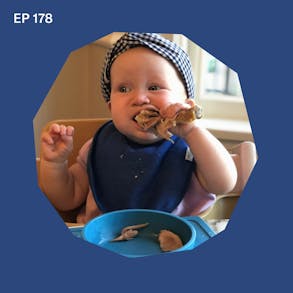
LISTEN TO THIS EPISODE
Episode Description
What is white meat and is it safe for babies to eat? In this episode we are exploring various types of white meat: poultry and fish, including ideal cuts and preparation methods of each that are safest for baby-led weaning.
Links from this Episode
- Baby-Led Weaning with Katie Ferraro program with the 100 First Foods™ Daily Meal Plan, join here: https://babyledweaning.co/program
- Baby-Led Weaning for Beginners free online workshop with 100 First Foods™ list to all attendees, register here: https://babyledweaning.co/baby-led-weaning-for-beginners
Other Episodes Related to this Topic

Latest Episodes

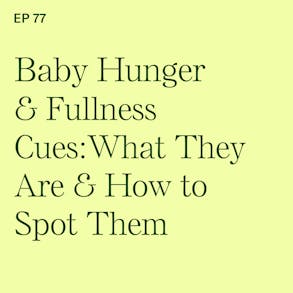
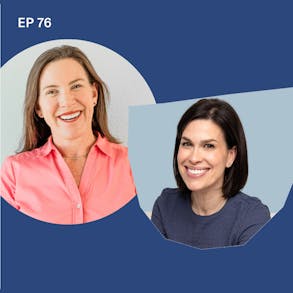
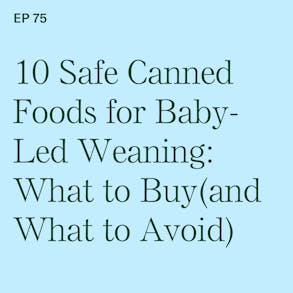

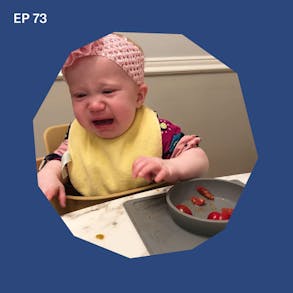
Katie Ferraro (1m 41s):
Meat eaters fish is a very rich source of omega three fatty acids. And those are types of fatty acids that the body doesn't make on its own. So I like fish because it provides those essential fatty acids. And again, that fat, if you're doing the fatty fish that babies need for their still developing brains, Hey there M Katie Ferraro Registered Dietitian college nutrition professor and mom of seven specializing in baby led weaning here on the baby led weaning made easy podcast. I help you strip out all of the noise and nonsense about feeding, leading you with the competence and knowledge you need to give your baby a safe start to solid foods using baby led weaning You guys.
Katie Ferraro (2m 24s):
Welcome back this episode, we're talking about White Meat. Your Baby Can Safely Eat. Hey. In the last episode, episode 177, we did red meat and now we're going to do White Meat. So let's talk about the classification, just a quick overview of what's the difference between red meat and white meat. Okay. When we talked about red meat in the last episode, I mentioned how it contains or consists of livestock, beef, pork veal, lamb, a White Meat. It's basically fish and poultry. Okay. Now fish, we're going to talk about some of the different classifications of fish and some good ideas of fish. You can feed your baby pretty much every fish, almost all them. And then we're also going to talk about poultry because there are some better choices from the poultry counter at your grocery store that you might want to flip.
Katie Ferraro (3m 10s):
When you're going to pick foods for your baby to eat for baby LED WEANING. Now what's the difference between white and red meat. I mentioned the actual like animal difference, but from a classification standpoint, really the difference between red meat and white meat has to do with the amount of myoglobin. So myoglobin is this protein that carries oxygen to the cells of the body. It's usually found in the heart and the skeletal muscles and red meats have more myoglobin than do white meats. So when we're talking about our White Meat, the less myoglobin containing animals, okay. Poultry and fish. Now from a nutrition standpoint, how do the White Meat differ from the red meat? Okay.
Katie Ferraro (3m 49s):
All animal foods contain iron. And a lot of times we talk about the benefits of offering meat. There's lots of reasons why you offer your baby meats, right? Like texture and taste and flavor and nutrition is in there too, right? Iron and zinc and protein, et cetera. But from an iron standpoint, red meats tend to have a little bit more iron than the white meats do, but I don't want you guys to discount the white meats because they still are a good source of that. Heme, iron and heme. Iron is the type of iron. That's more well absorbed by the human body than is the plant-based or non-heme iron. We love plant proteins. We love plant foods, but the type of iron in plant foods is not as well absorbed by the body as is heme iron, which comes from the animal foods.
Katie Ferraro (4m 30s):
So when we're talking about the cuts of White Meat, okay, and some people historically have preferred white meat from a quote unquote health standpoint. If you think about the history of, at least in the United States, talking about heart health, especially during the 1990s, there was a big focus on low fat, low fat, this low fat that everyone got into chicken breast, right? All chicken breasts are so healthy, cause they're all protein, right? Cause there's no carbohydrate in any meat products. So the only thing left where you could be getting calories from in the animal comes from fat or protein. And if you choose the type of animal food, like chicken breasts that have no fat in it, it's like pure proteins. So people like, oh my gosh, I love chicken breast. There's so much protein in them. Can we talk a little bit about protein, but PVPs need a moderate amount of protein.
Katie Ferraro (5m 12s):
They don't need a lot of protein. We never want to be favoring one micronutrient over the other. Yeah. There's some good stuff in chicken for babies, including protein, but we don't want to go like real heavy on the protein. Right? Most Americans eat too much protein. Most American adults eat excessive amounts of protein. We don't want to get in the habit of offering babies too much protein, but you like to see some protein on the plate, right? Cause if I see a baby plate and it's just all fruits and vegetables, I mean, there's good stuff with fruits and vegetables, but there's no iron in there, right? They're not going to be getting maybe enough protein if they're just having fruits and vegetables. So it's why we want to offer baby of a variety of foods. Now, from the fat standpoint, it is true that there's less saturated fat. So that's the kind of nasty type of fat that we know elevates the bad cholesterol levels. And it's, to be honest, something we do not need to worry about in babies, but as adults, a lot of us have been trained to like, oh, I want to eat less saturated fat.
Katie Ferraro (5m 59s):
Okay. So when we're looking at the fat content of meat, I don't want you to get bogged down on the saturated fat content. We actually like a little bit of fat in babies foods, right? Babies need fat for they're still developing brains and fat provides a moisture and moisture is important in reducing choking risks. And when we're talking about feeding meat to babies, Any dry food, but particularly dry proteins foods can be a choking hazard. And I don't know about you. I'm not a great cook. I'm like a decent cook, but I struggle with chicken breasts. Like no matter how, I mean, I guess if you had a lot, a lot of butter, it can be delicious, but by itself with just pure protein, it's hard to make it very nice and soft and moist. That would be the safest type of meat to serve a baby. So when it comes to the cuts of poultry, there's white meat and dark meat.
Katie Ferraro (6m 43s):
So you might be aware that the White Meat is the breath. I think like all poultry, right? So the White Meat of not all poultry, because duck is actually quite high in fat across the board. But when talking about chicken versus Turkey or chicken and Turkey, the breast tends to be almost have no fat in it as it is naturally. Now, if you add a bunch of fat, then that can make it more moist, of course. But I tend towards the darker cuts of poultry, the legs, the wings, and the thigh meat, because there's a lot more fat in there. And when you cook that meat, the fat liquefies and the liquid equates to moisture, and that makes it easier for the baby to swallow. So I like the dark cuts of poultry, legs, wings, and thighs. When I'm choosing Turkey or chicken for my baby and I steer clear of the breath. Could you feed a baby chicken breasts deeply?
Katie Ferraro (7m 24s):
Absolutely. Is it my first choice at the meat counter? No. Now what about fish? Okay. From fish standpoint, that's the other type of White Meat fish is certainly safe for babies to eat. It did a whole episode about fish. If you want to learn more, if you go back to episode 31, it's called fish. How to safely introduce your baby to this potentially allergenic food. And I know sometimes parents worry about fish because they think, oh my gosh, I see this stuff about mercury and fish. And I want you to know that every major health potty and any credentialed feeding expert that you're talking to will always reassure you that the benefits of feeding your baby fish far outweigh any potential health risks. And fish is important for me as a dietician for two reasons.
Katie Ferraro (8m 7s):
Number one, it contains the protein fish protein, which is one of the big eight allergenic foods. Well with Sesame, there's nine of them, that account for about 90% of food allergy. And we want baby to be introduced to fish protein early and often. Okay. There's not like as much data about preventing fish allergy with earlier introduction for fish. As we see for like egg and milk and peanut. However, we know that there's no benefit to withholding fish. Okay. So we put fish up there with the other allergenic foods that we want to introduce early to baby. So one, you get the benefit of potential reduction in fish allergy by offering this food to your baby. But secondly, fish is a very rich source of omega three fatty acids.
Katie Ferraro (8m 48s):
Okay? And those are types of fatty acids that the body doesn't make on its own. We have to get it from external sources. Your baby gets them from breast milk or if using formula, which is fortified with it from there. But when you start introducing solid foods, there's not a lot of food sources of these omega three fatty acids. They're essential fatty acids. Essential means we have to get it in the diet. So I like fish because it provides those essential fatty acids. And again, that fat, if you're doing the fatty fish that babies need for their still developing brains. So I liked both white fish, an fatty fish for baby LED WEANING. The fatty fish is a little bit easier because it tastes better and it's very moist in the end product. And that again is safer for baby to swallow than like a really dry piece of like white fish.
Katie Ferraro (9m 29s):
Now the fatty fish are things like salmon and macro and anchovy and tuna and herring. Okay. Now I compare those to the white fish, perfectly fine to feed your baby with the white Fisher, the lighter fish, right? Cod tilapia, Pollack, grouper halibut, whenever I'm making those for babies, those tend to be really lean, like just pure protein. And again, they can get dried out very easily and then be harder for baby to swallow. I just add a ton of oil when I'm cooking it. Okay. If your baby's already had cows milk protein, you can do a bunch of butter if you want to. So for the Whitefish that are really lean, I just add the extra fat and it gets a little bit slippery, more moist there and safer for baby to eat. Now, when it comes to fish, most fish is safe for babies to eat.
Katie Ferraro (10m 9s):
However, we do want to avoid the fish that have the highest mercury levels. So the guidance from the United States, EPA and the FDA, the kind of got together to make their fish guidelines. That's our food and drug administration. And then our environmental protection agency, the fish that they recommend that pregnant women and small children, including infants avoid are the highest mercury level ones. So that's king mackerel, Marlin orange roughy, shark swordfish, tilefish from the Gulf of Mexico and then big eye tuna. Those are the ones that tend to be bigger on the food chain. Okay. They consume lots of the smaller fish, smaller down the food chain. They're bio accumulating, all of those smaller fishes mercury levels. So those big, big fish tend to be higher in mercury, therefore not appropriate for our babies.
Katie Ferraro (10m 54s):
So make sure you're avoiding the high mercury level fish and I'll link to the FDA and EPA guidance about fish. So you can see the best choices for mercury good choices. And then the ones to avoid. That'll be on the show notes page for this episode, which you can find at BLW podcast.com/ 1 7 8. So in summary, White Meat includes poultry and fish from the White Meat. I love the darker White Meat, legs, links and thighs for babies because of the fat content. And it makes a more moist, soft shreddable cooked product. That's safer for babies to eat. And from fish, you can do both fatty or Whitefish. They're both fine. Just make sure that you stay away from the high mercury types of fish. One final fun fact, before we go.
Katie Ferraro (11m 34s):
What about things like emo and ostrich? They're technically poultry because they're birds, but the pH of their flesh is similar to beef. So they're actually classified in the United States as a red meat. I'd be interested to hear if any of you guys have fed your babies emo or ostrich. It's not on my hunter first foods list, but occasionally I'll see some parents doing it. I think it's pretty cool. And if you guys want to grab my hundred first foods list, I give it to everybody on my free weekly workshop called baby LED WEANING FOR BEGINNERS. There's a protein category on the a hundred first foods list. It's got 20 types of protein, some plant, and some animal foods in there. Everyone on that free workshop gets a copy of the a hundred first foods list. So you can start knocking off some of these different red and white meats for your baby. You can sign up for this week's workshop times.
Katie Ferraro (12m 16s):
If you head to babyledweaning.co And also link everything I mentioned today on the show notes page for this episode, which you can find at BLW podcast.com/178. All right. Well, thanks so much for listening. Hope you guys learned a little bit about some White Meat. Your Baby Can Safely Eat. See you next time. Bye now.
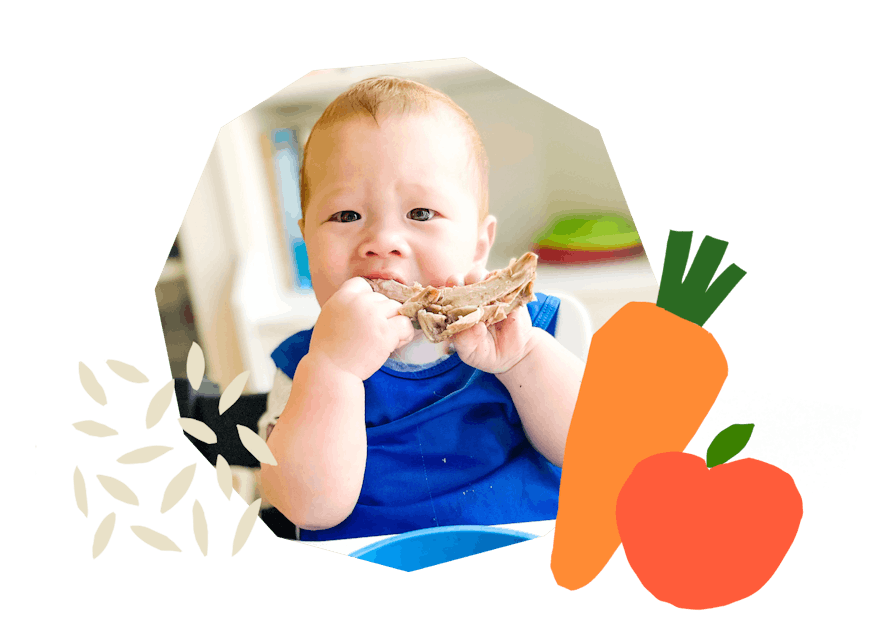
The Program Baby-Led Weaning with Katie Ferraro
A step-by-step digital program for starting solid foods safely and navigating the original 100 FIRST FOODS™ meal plan with baby-led weaning.
 EXPERT-LED, PROVEN APPROACH TO EATING REAL FOOD
EXPERT-LED, PROVEN APPROACH TO EATING REAL FOOD CONCISE VIDEO TRAININGS TO MASTER BABY-LED WEANING
CONCISE VIDEO TRAININGS TO MASTER BABY-LED WEANING 100 FIRST FOODS DAILY MEAL PLAN WITH FOOD PREP VIDEOS
100 FIRST FOODS DAILY MEAL PLAN WITH FOOD PREP VIDEOS
Baby-Led Weaning for Beginners Free Workshop
Is your baby ready to start solid foods, but you’re not sure where to start? Get ready to give your baby a solid foundation to a lifetime of loving real food…even if you’re feeling overwhelmed or confused about this next stage of infant feeding.
Get baby-led weaning recipes and tips delivered to your email inbox.

